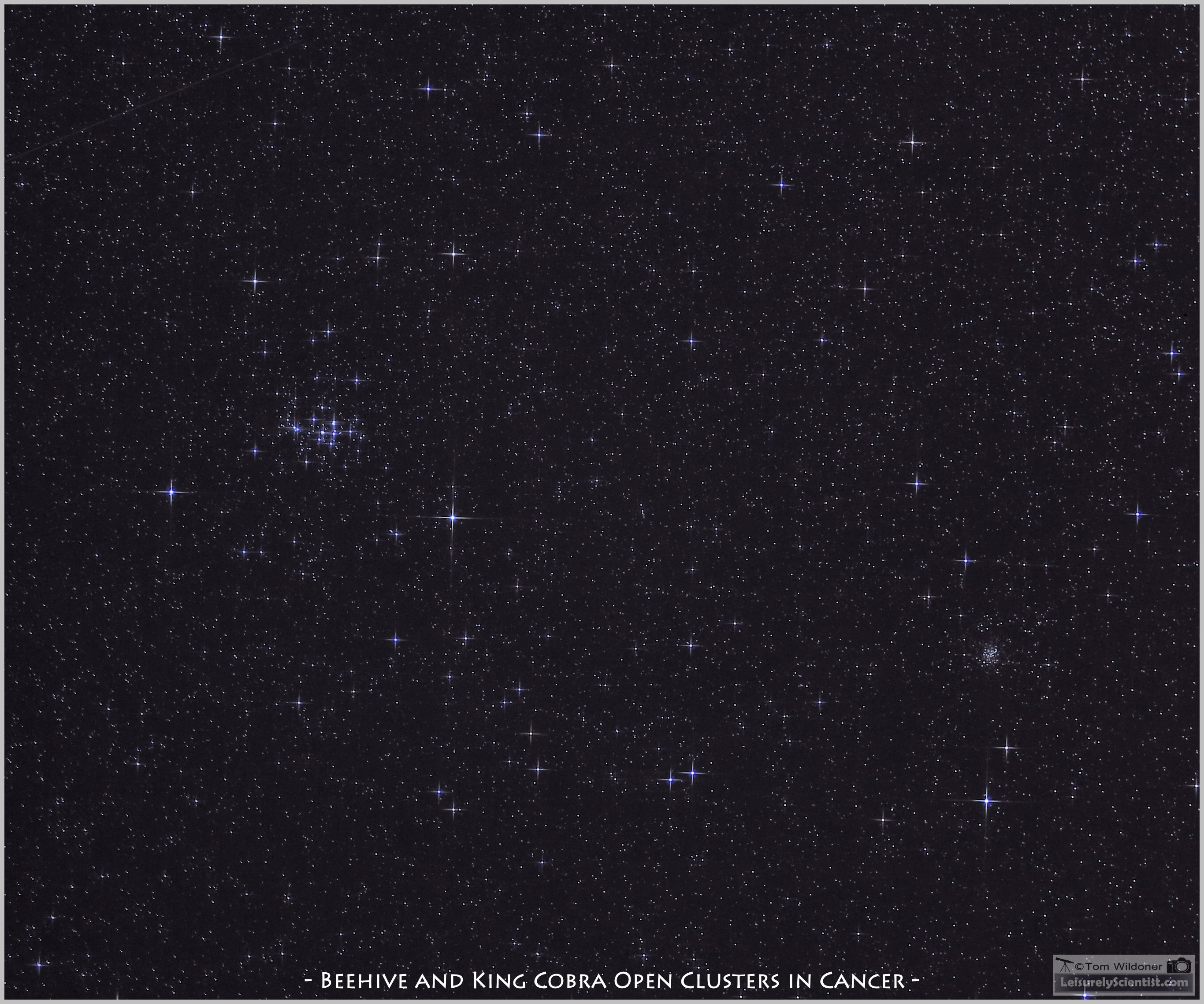

The Pleiades is an open star cluster in Taurus, still surrounded by its veil of nebulosity. You can see it easily with the eye alone. Astronomer Fred Espenak, who captured this photo in 2018, wrote: “M45, the Pleiades star cluster, visible as a tiny dipper-shaped clump of stars. Definitely one of the most beautiful open star clusters in the sky. This image is a stack of 20 individual 5-minute exposures through a Takahashi Epsilon 180ED Hyperbolic Astrograph using a Canon 6D DSLR.”
Open star clusters are young, loosely bound gatherings of stars. The stars in these clusters were born together. They’re still sometimes moving within the nebula, or cosmic cloud, of their creation. They’re occasionally called galactic clusters. Scientists have discovered more than 1,200 open clusters around us in space. They may contain a handful of stars or thousands of stars. Most likely won’t survive more than several orbits around our galaxy’s center before being disrupted and dispersed. You can see many open star clusters with the eye alone! Or you can aim binoculars or telescopes their way …
The Pleiades cluster (M45) is a wonderful open cluster in the constellation Taurus the Bull. A favorite observing target, the Pleiades stands out to the eye alone as a fuzzy patch that resembles a tiny dipper. About six stars can be seen with the unaided eye. Through binoculars, the view explodes into dozens of stars. The Pleiades – aka the Seven Sisters – may have dimmed enough since its naming that only six stars are now readily visible. The word Pleiades translates to Subaru in Japanese, and you might recognize the grouping of six stars from the car-maker’s logo. The stars in the Pleiades were born together about 100 million years ago, and the open cluster itself lies about 440 light-years away.
By the way, open star clusters are not to be confused with tightly bound globular star clusters. Globular clusters are ancient and far away, orbiting in the halo of the Milky Way. Globular clusters formed about 13 billion years, when the Milky Way was forming. In contrast, open clusters are typically only millions of years old. One of the best-known globular clusters seen from the Northern Hemisphere is the Great Cluster in Hercules (M13). It’s about 25,000 light-years away. Contrast the M13’s large distance to that of the relatively nearby Pleiades (440 light-years).
Read more: The Pleiades or 7 Sisters
Read more: The Great Cluster in Hercules
EarthSky 2021 lunar calendars now available! They make great gifts. Order now. Going fast!
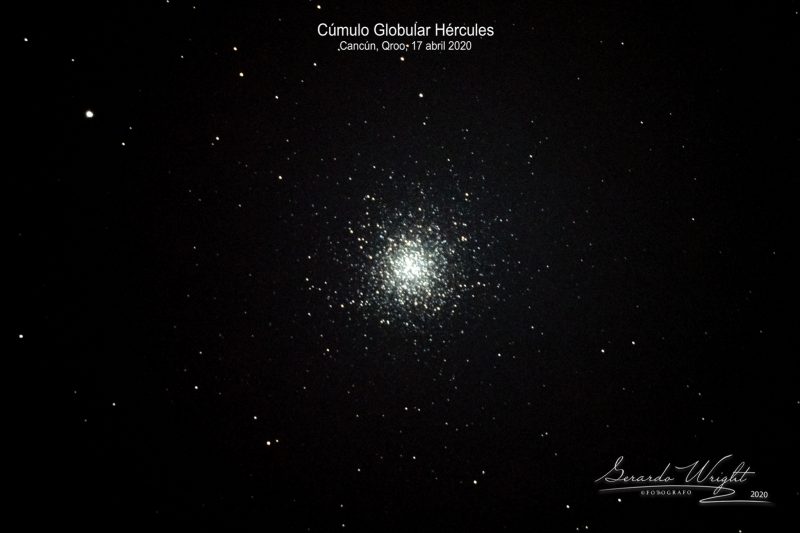
View larger at EarthSky Community Photos. | This isn’t an open star cluster. It’s a globular star cluster, the Great Hercules Cluster, captured by Gerardo Wright in Cancun, Mexico, on April 17, 2020. Thank you, Gerardo! Notice its symmetrical shape. Unlike open star clusters, which are loosely bound collections of a few hundred or a few thousand stars, globular star clusters are tightly bound clusters of up to about a million stars.
The distance to a star cluster will affect its appearance to us on Earth. Open star clusters are recognizable as a concentration of stars in one area of the sky. These conglomerations of light – such as the Pleiades or the Wild Duck Cluster (M11) – are obvious to telescope and binocular users, when you stumble across them in the sky.
But what about star clusters that are closer to Earth?
The familiar Big Dipper asterism is part of an open cluster. These stars are all about 80 light-years away and belong to a loosely assembled open star cluster cluster known as the Ursa Major Moving Group. The Big Dipper is an example of a cluster that’s so close that it wasn’t immediately identifiable as a cluster. Astronomers had to learn about the motions of stars in various parts of the sky before the Ursa Major Moving Group came to be understood.
The Big Dipper, just like other open clusters, will grow apart as it ages. Alkaid and Dubhe, two stars in the Big Dipper, are not part of the Ursa Major Moving Group, so as the stars drift through space, those two stars will stretch away from the rest and the dipper shape will become obscured as it transforms to something new, just as many thousands of years ago the stars looked more like a kite with a long tail than its current configuration of a spoon or plough.
Read more: Come to know the Big and Little Dippers
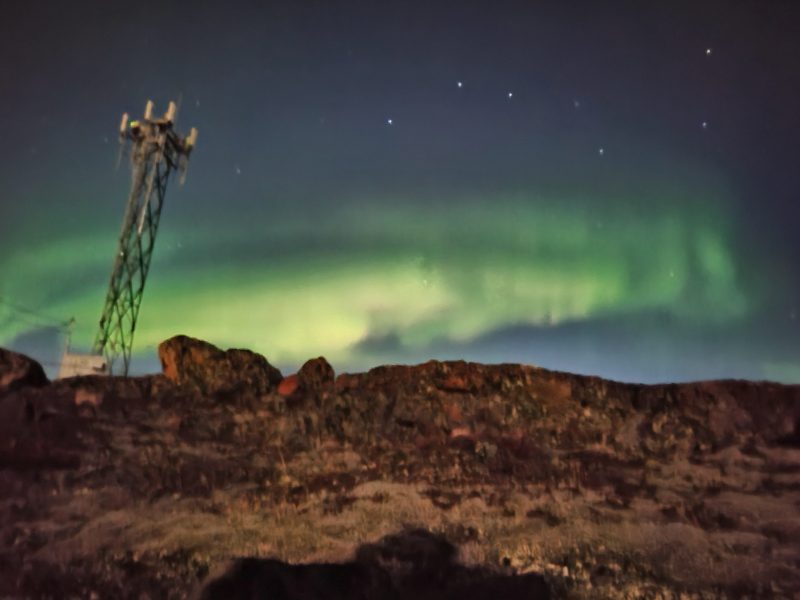
View at EarthSky Community Photos. | Some of the stars of the Big Dipper are part of an open cluster called the Ursa Major Moving Group. Ariel Atienza in Iqaluit, Nunavut, Canada, captured the Big Dipper and a green aurora on September 30, 2020. Thank you, Ariel!
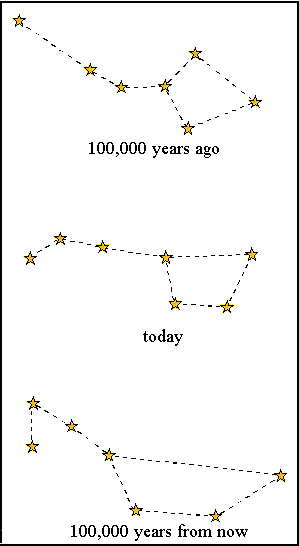
Stars of the Big Dipper today – 100,000 years ago – and 100,000 years from now via AstroPixie.
The V-shaped Hyades star cluster in the constellation Taurus the Bull is another excellent open cluster to target with the eye alone. The Hyades is so large you could not hope to capture the entire cluster within the field of view of binoculars or a telescope anyway. Instead, binocular and telescope-users examine the cluster bit by bit.
The Hyades marks the head of Taurus the Bull. It is a large open star cluster in the shape of the letter V that can be viewed during northern winter (southern summer). This open star cluster is a group of 300 to 400 stars that lie about 151 light-years away from us, making it one of the nearest open clusters to Earth. With the unaided eye under moderately good seeing conditions, an observer should be able to see five stars that mark the two sides and juncture of the V.
The five brightest stars in the Hyades are all red giants, but you’ll notice one shines much more brightly than the others. The brightest star in Hyades – and in the constellation Taurus – is Aldebaran, which marks the top left side of the bull’s head. If Aldebaran is also a red giant star, why does it look so much brighter than the rest of the group? The reason is that it’s not a member of the Hyades cluster. It just happens to lie in the same line of sight. At 65 light-years distant, Aldebaran is 2 1/2 times closer than the rest of the cluster.
Read more: The Hyades star cluster, Face of Taurus

The Hyades open star cluster forms the V-shaped face of the Bull in Taurus. The bright red star Aldebaran isn’t a true cluster member. Another open star cluster, the Pieiades, can be seen nearby.
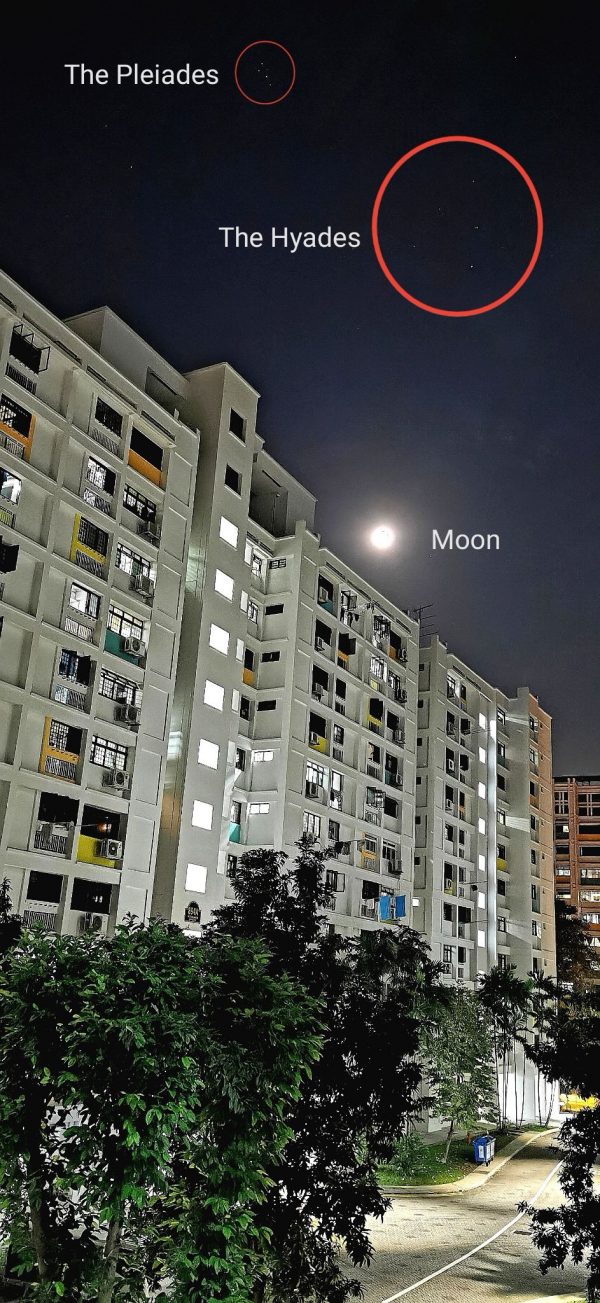
View at EarthSky Community Photos. | Kannan A in Woodlands, Singapore, captured this photo of the Pleiades and Hyades clusters on December 1, 2020. He wrote: “The waning gibbous moon seen rising from the east with The Hyades and The Pleiades star clusters tonight in Singapore.” Thank you, Kannan! These are two excellent examples of open clusters in Taurus.
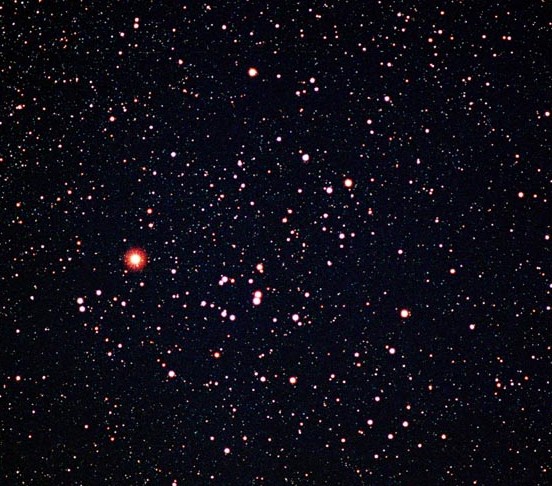
A telescope reveals over 100 stars in the Hyades cluster. The bright red star here is Aldebaran. Image via astronomycafe.net.
The Beehive star cluster is another famous example of an easy-to-see open star cluster. The Beehive lies at the center of the constellation Cancer the Crab and is also known by the names M44 or Praesepe, which is Latin for manger.
At magnitude 3.7, the Beehive Cluster can be tricky to spot from a light-polluted area because of how diffuse it is; it’s spread out more than twice the size of a full moon. Using only your eyes, the open cluster will appear as a misty patch of light. Binoculars will help you focus in on a handful of stars. If you’re using a telescope, make sure to use a low-power eyepiece because the stars will spill out of your field of view.
Astronomers have found that the Beehive Cluster contains at least 200 stars, but only a fraction of them can be seen with amateur equipment. Galileo saw 40 with his rudimentary telescope. At least three planets are now known to be orbiting stars in the Beehive Cluster.
The cluster is about 730 million years old and lies approximately 577 light-years away from us. The Beehive’s age and direction of proper motion through space are similar to the Hyades cluster. This suggests that these two clusters probably had a common origin in a nebula that existed 800 million years ago.
Read more: The Beehive, 1,000 stars in Cancer
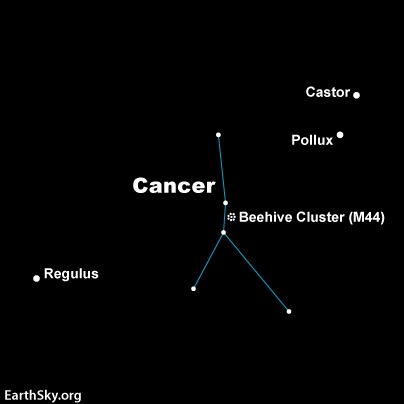
Look for the Beehive open star cluster between the constellation Gemini’s 2 brightest stars, Castor and Pollux, and the star Regulus in the constellation Leo.
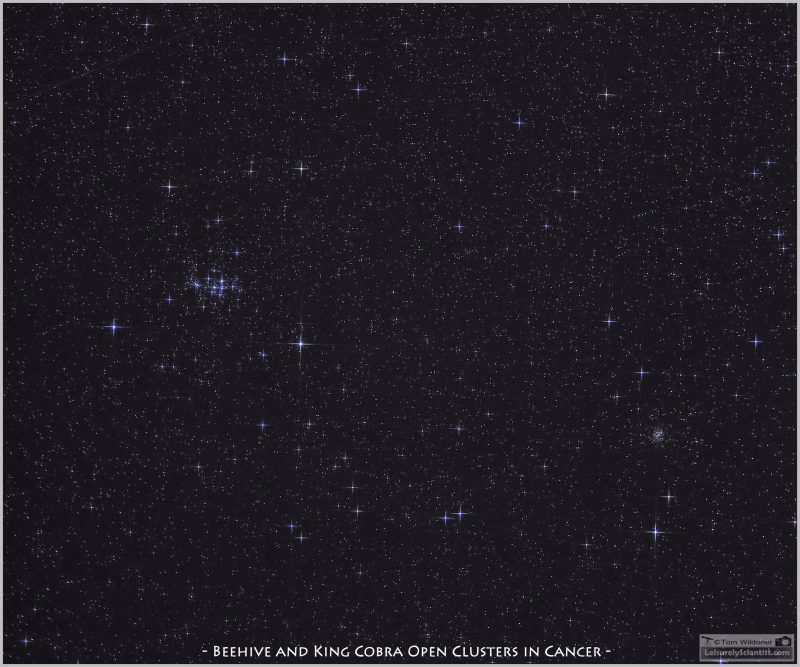
The cluster of stars on the left in this image is the Beehive, within the constellation Cancer the Crab. You can also see the King Cobra cluster here, on the right of the image. Image via Tom Wildoner/ The Dark Side Observatory.
Bottom line: Open clusters are loosely bound gatherings of stars that may be so young that they are still surrounded by the nebulae they were born in. The Pleiades, Hyades, and Beehive are well-known examples of open clusters.
Source:
https://earthsky.org/astronomy-essentials/definition-examples-what-are-open-star-clusters